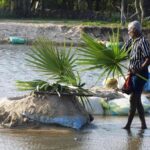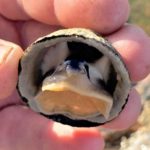Catching octopuses in the lagoons of Zanzibar is an age-old and sustainable activity mainly carried out by adult women. Depending on the number of caught animals, they are used to feed the family and sold to restaurants and fishmongers. As such, it is one of the few sources of income for this gender group.
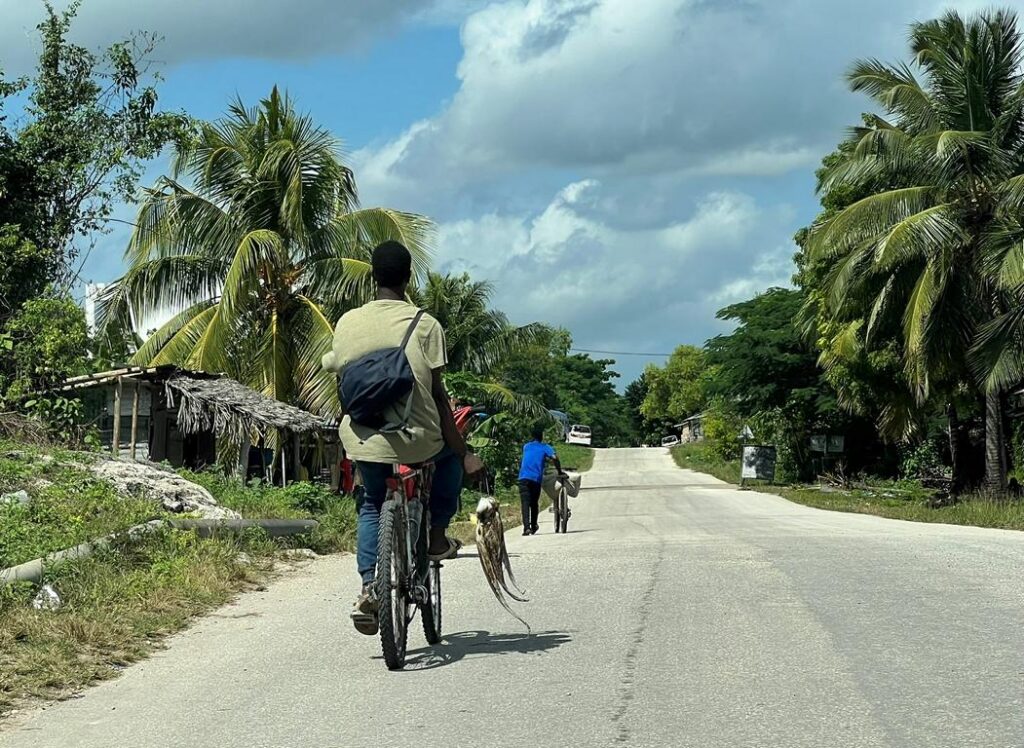
Geolocation and characteristics of the lagoons

The island of Zanzibar is surrounded by coral reefs in the east, southwest, and northwest directions, as well as around the eastern islands. The western coastline from Potoa in the North to Fumbe in the South is mainly devoid. These reefs act as mighty barriers against the waves of the Indian Ocean and large intertidal flats with shallow waters formed between the outer reefs and island beaches. Locals forage daily for various sea animals and seaweeds at these resulting intertidal reef flats and subtidal inner reefs. One of these animals is of the order Octopoda.
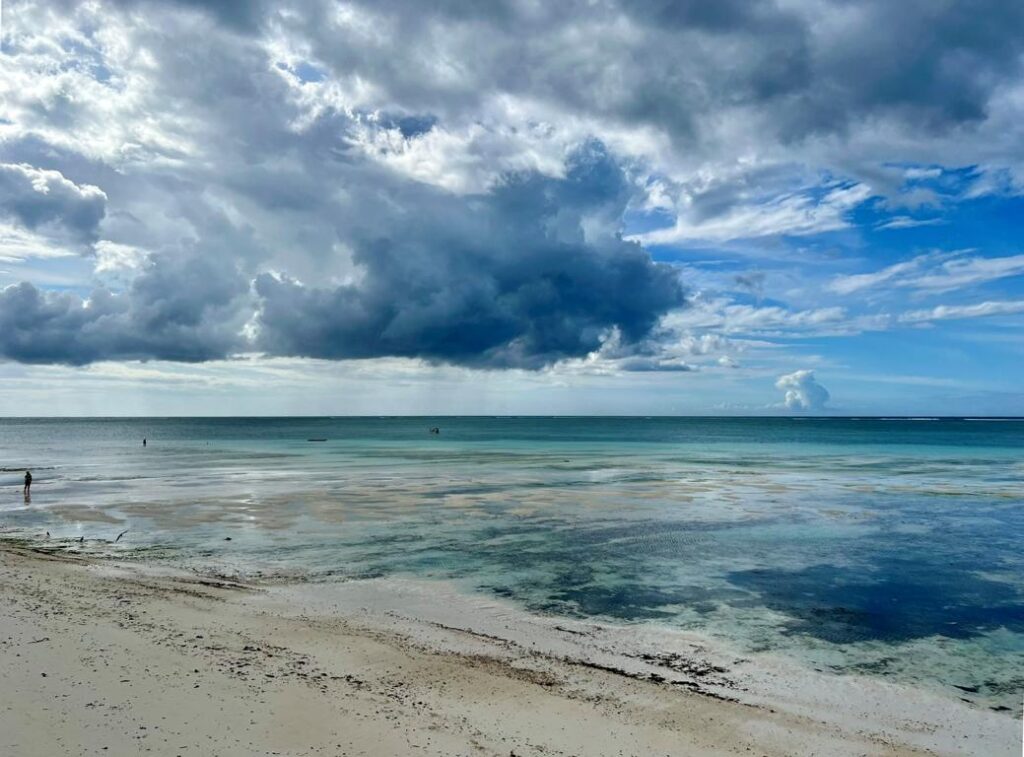
Octopus species in Zanzibar
Three octopus species live in the lagoons of Zanzibar. These are the White-spotted-, Common-, and Big Blue octopuses. The White-spotted octopus (Octopus chromatus) and the Common octopus (Octopus vulgaris) are caught seldom.
The Big Blue-, or Day octopus (Octopus cyanea), is the main species caught, contributing to over 99% of the catch. Due to its rapid growth rate and high prevalence along the shallow coast, it is the most landed octopus species among Tanzanian fishing folk.
These ‘Big Blue octopuses’ are a large, omnipresent octopus species associated with coral reefs. They are widely distributed in the Red Sea, the eastern coastline of Africa, Southeast Asia, Australia’s west and east coasts, and the Pacific islands.
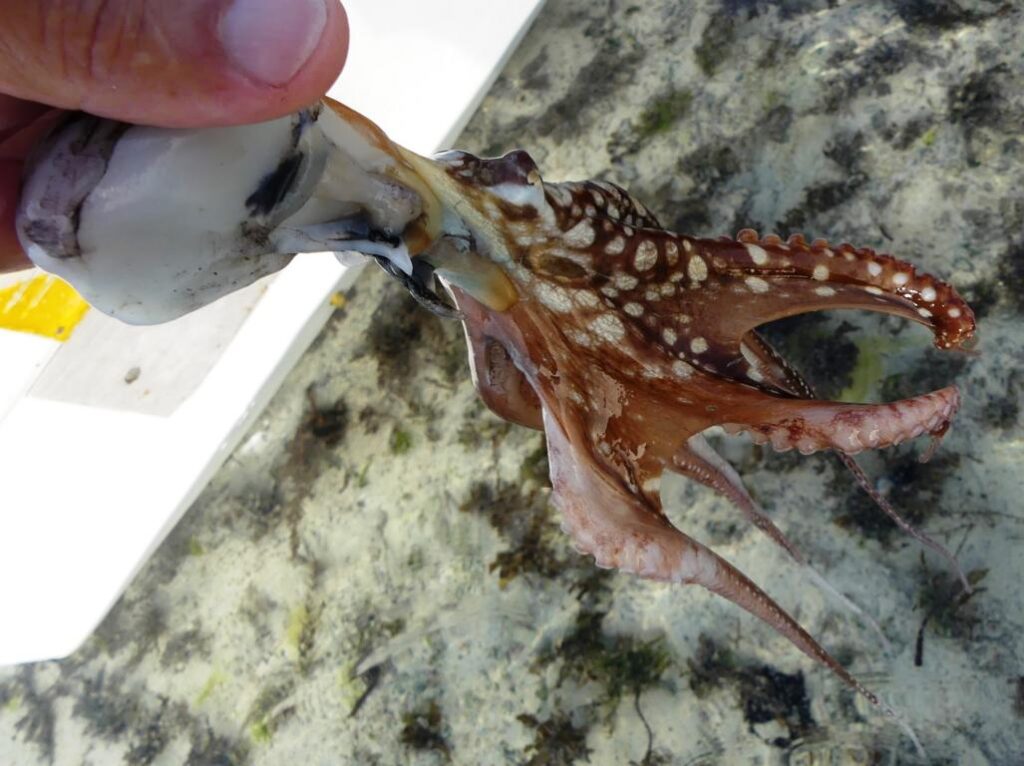
The species has ordinarily smooth skin and white spots on its body, which can change color from dark brown to white. However, it must camouflage perfectly as it is active during the day. Therefore, it can change color frequently and its skin’s patterns and texture. As it moves across the seabed, it instantaneously changes in its coloring and appearance to match the substrate beneath.
The Big Blue octopus’s size and weight vary, but females are roughly twice as large and heavy as males. Adult females can weigh up to 6,500 g (14.3 lb). The total life span of Octopus cyanea is between 12 and 15 months.
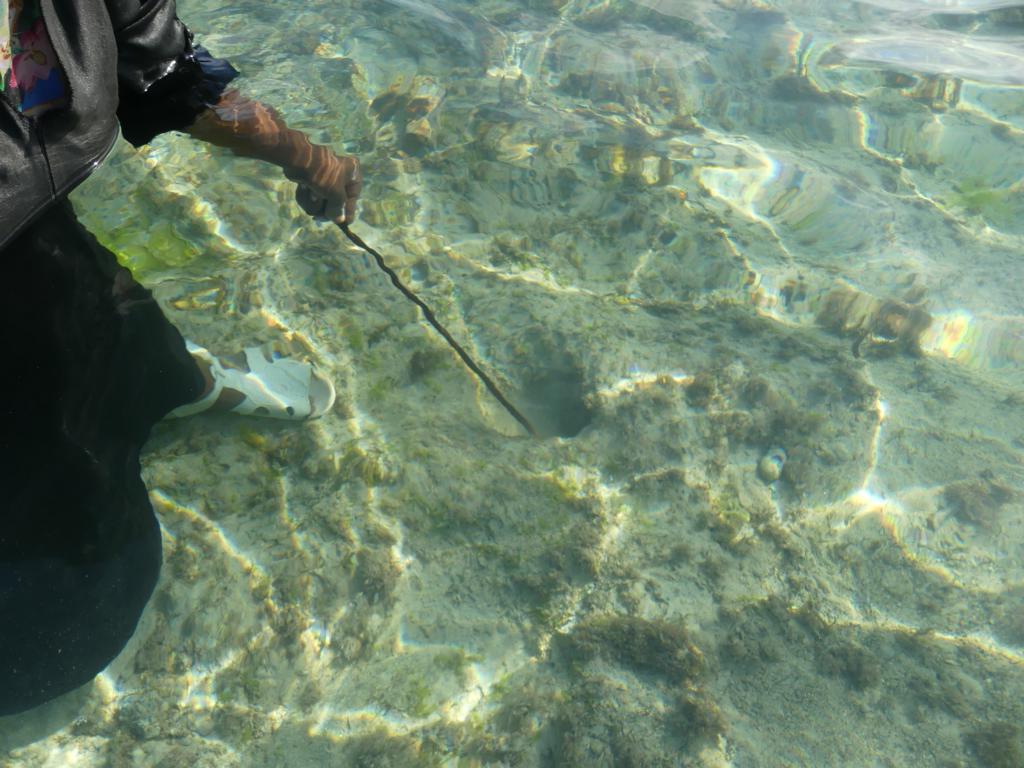
Octopus hiding places
For hiding, it maintains a den to which it returns after foraging. This can be a rock crevice, a hidden place under an overhang, a hiding place among coral heads, or a hole excavated in rubble or sand. The hide entrance in areas with low human hunting pressure is often littered with small stones, empty mollusk shells, and crab carapaces. If humans hunt octopuses daily in some regions of the lagoons, these entrances can be devoid of possible indicators of their presence.
How to catch octopuses in the lagoons?
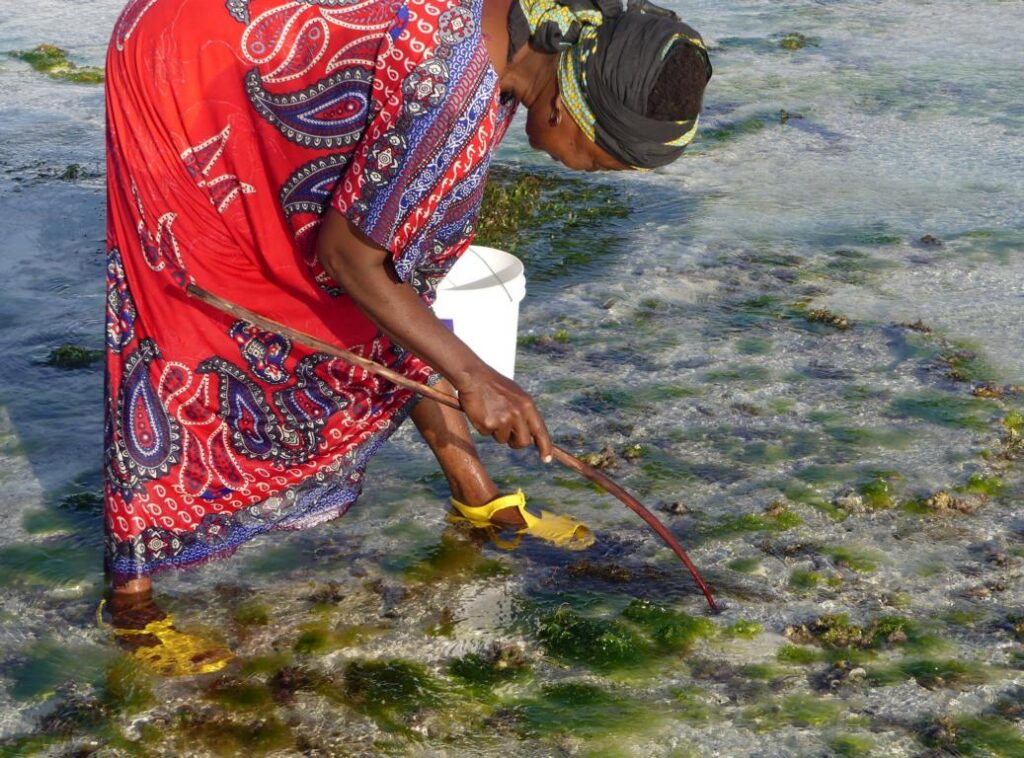
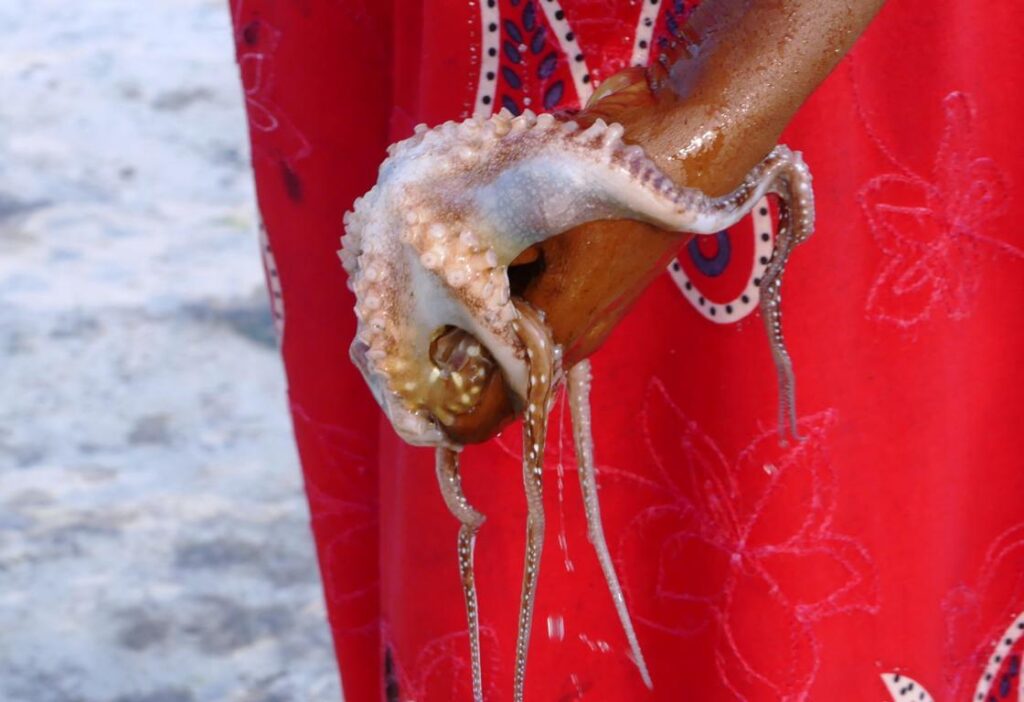
The beachcombers walk over the intertidal reef flat and look for possible hiding places for octopuses. When finding a hole or other potential hiding place, they look for rubble around the entrance or other indicators, like a clean and smooth entrance, or they even see parts of tentacles. Once spotted, a bent wooden or metal rebar stick (called Kijiti in Swahili) is inserted into the den, which will be tried to impale the octopus onto the stick. The stick with the octopus is then withdrawn, and the octopus is caught by hand on the opposite side of its beak.
After securely holding the octopus, the catching stick is repeatedly inserted through its beak into its body, killing it immediately.
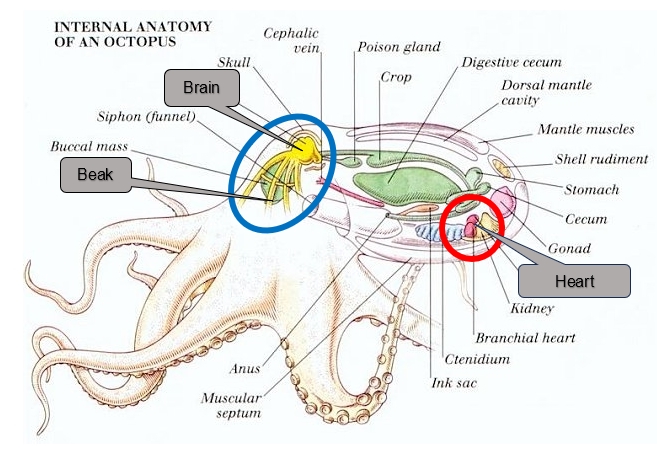
The octopus’s brain is located directly behind the beak. See the picture above. Sticking the octopus through the beak will crush its brain and kill it.
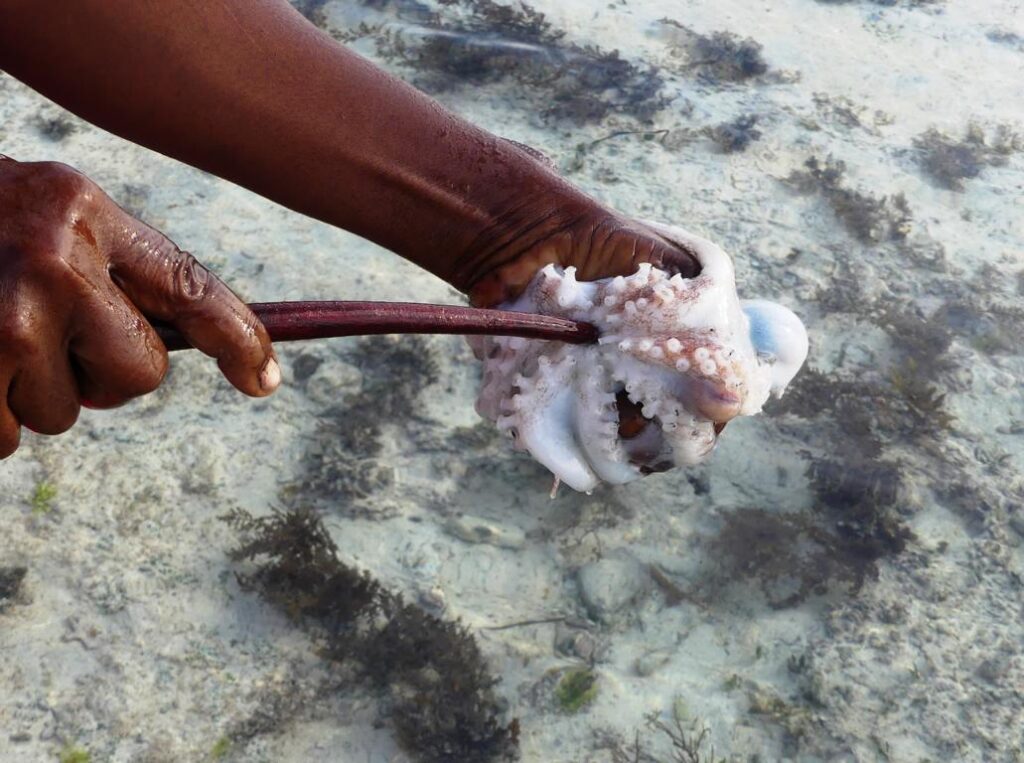
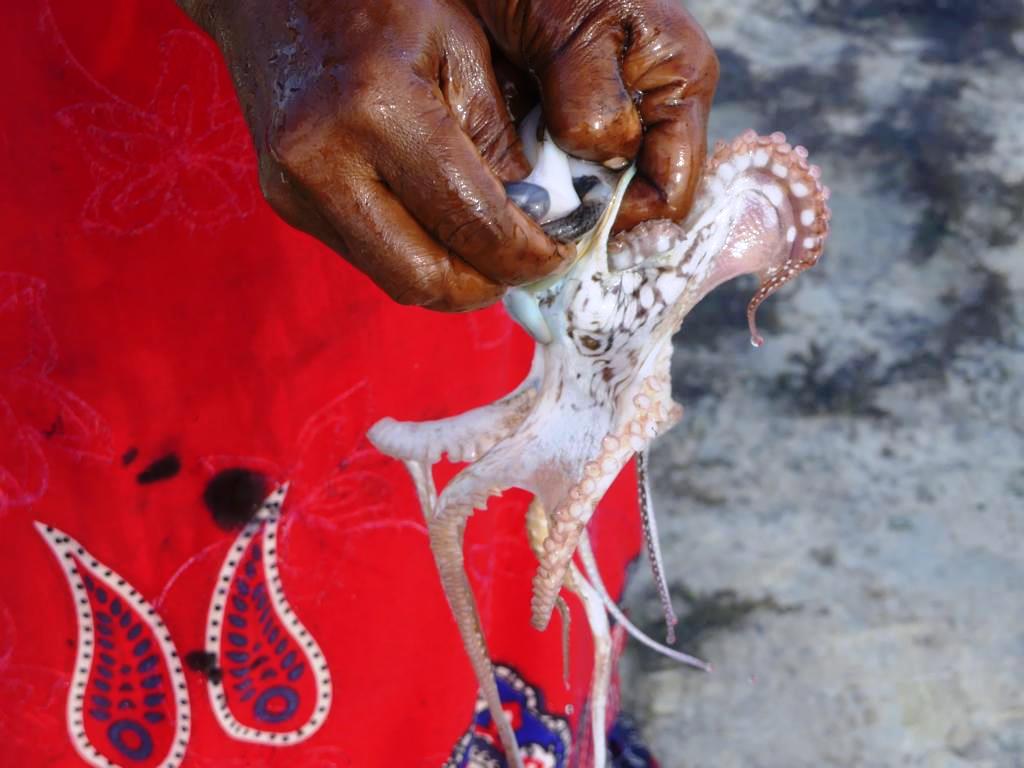
After sticking, the whole mantle will be turned inside out, the heart removed, and no life will remain in the body.
Spearing octopuses

The second method of catching octopuses in Zanzibar is using a spear called Mkuki in Swahili. This spear comprises a stick with a sharp end or a piece of iron inserted at the tip and will also be used by men.
Preparation of octopuses for the kitchen
Before cooking, octopuses must be cleaned and tenderized to make them more palatable. This is done simultaneously in Zanzibar using an age-old method, which we could call ‘Pounding and sand-rubbing’: The same method is also used in many other coastal countries.
Pounding reduces the toughness of the meat by loosening its fibers. It also helps to break down collagen, allowing it to dissolve into gelatin, which improves the texture. Pounding the meat will achieve a more uniform thickness, allowing the meat to cook more uniformly. Furthermore, beating will improve the flavor absorption of the meat. Rubbing octopuses in the sand is a gentle tenderization that softens the skin’s texture. However, its primary purpose is to remove residual saltwater and slimy layers.
With this method, octopuses are repeatedly pounded with a stick and rubbed in the sand until a soft and clean mass of octopus meat is present. How long this procedure takes depends on the circumstances, but it is hard work, and I would assume around 15 minutes of pounding and rubbing for each octopus. After this procedure, the meat will be cleaned from the sand in salt water (or freshwater if available) and boiled for about 4 hours until fit for consumption.
Lessons learned from catching octopuses in the lagoons of Zanzibar:
- Around the island of Zanzibar, a rim of intertidal flats is located.
- Big Blue octopuses, also called ‘Day octopuses’, occur in large numbers on these coral flats.
- These octopuses hide in holes and crevices and are caught with a simple, bent stick.
- After catching them, the stick will be pushed into the beak and the brain, killing it immediately.
- Preparing the octopuses for the table involves pounding them with a stick and rubbing them in the sand.
Further readings about catching Cephalopods on this website:
Rectangular squid traps in Thailand
Semi-circular squid traps in Thailand
Catching Octopuses by Sea-Gypsies
.



